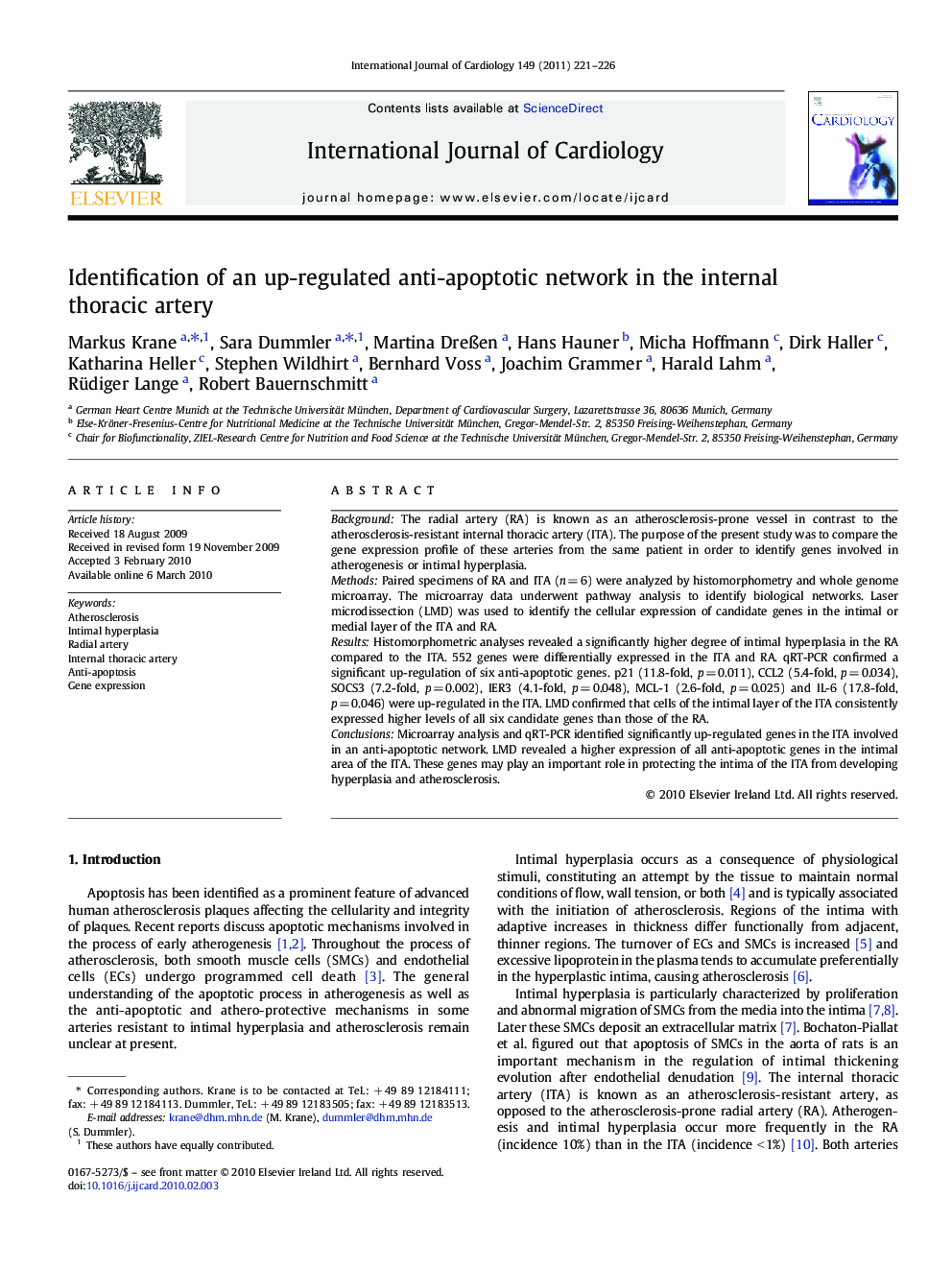| Article ID | Journal | Published Year | Pages | File Type |
|---|---|---|---|---|
| 5979090 | International Journal of Cardiology | 2011 | 6 Pages |
BackgroundThe radial artery (RA) is known as an atherosclerosis-prone vessel in contrast to the atherosclerosis-resistant internal thoracic artery (ITA). The purpose of the present study was to compare the gene expression profile of these arteries from the same patient in order to identify genes involved in atherogenesis or intimal hyperplasia.MethodsPaired specimens of RA and ITA (n = 6) were analyzed by histomorphometry and whole genome microarray. The microarray data underwent pathway analysis to identify biological networks. Laser microdissection (LMD) was used to identify the cellular expression of candidate genes in the intimal or medial layer of the ITA and RA.ResultsHistomorphometric analyses revealed a significantly higher degree of intimal hyperplasia in the RA compared to the ITA. 552 genes were differentially expressed in the ITA and RA. qRT-PCR confirmed a significant up-regulation of six anti-apoptotic genes. p21 (11.8-fold, p = 0.011), CCL2 (5.4-fold, p = 0.034), SOCS3 (7.2-fold, p = 0.002), IER3 (4.1-fold, p = 0.048), MCL-1 (2.6-fold, p = 0.025) and IL-6 (17.8-fold, p = 0.046) were up-regulated in the ITA. LMD confirmed that cells of the intimal layer of the ITA consistently expressed higher levels of all six candidate genes than those of the RA.ConclusionsMicroarray analysis and qRT-PCR identified significantly up-regulated genes in the ITA involved in an anti-apoptotic network. LMD revealed a higher expression of all anti-apoptotic genes in the intimal area of the ITA. These genes may play an important role in protecting the intima of the ITA from developing hyperplasia and atherosclerosis.
